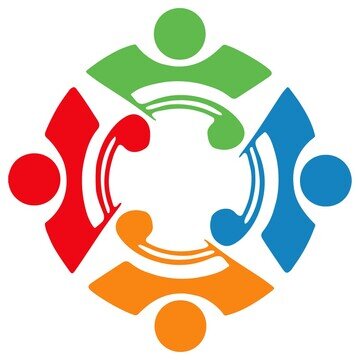51. Learn to read body langauge ... and avoid being unknowingly annoying
Have you ever been in a conversation where the person you’re talking to keeps getting closer while you’re backing away? Or you need to leave, but they won’t pause long enough for you to politely extricate yourself? And you’re sending out all kinds of nonverbal signals, but they’re not being received?
Being able to pick up on and respond to nonverbal cues is as important to connection as verbal communication skills. Sometimes actions do speak louder than words.
Data point of the week
You may have heard the statistic tossed around that 90% of communication is nonverbal—but that’s a misrepresentation.
The 90% figure came from body language researcher Albert Mehrabian back in the ‘60s. His ran a couple of communication studies that analyzed face-to-face conversations and determined that communication is 55% nonverbal body language, 38% vocal, and 7% words only.
However, as is true with many studies, it turns out his findings were taken out of context because they made for a good headline. The studies—and subsequent percentages—only applied to conversations where people’s feelings conflicted with their words. And in one study, only one word (“maybe”) was even uttered! Apparently Mehrabian has spent years trying to correct the misunderstanding surrounding his work, but to little avail. The truth is more complex, and less repeatable and interesting than “90% of communication is nonverbal.”
Reflection
It’s hard to pin an exact percentage on how much of communication is nonverbal vs. verbal, but eye contact, posture, facial expression, and gestures play a BIG role in conveying someone’s state of mind.
Of course, not everyone communicates the same way. People on the spectrum may not recognize and interpret nonverbal signals the same way as people who are neurotypical. Different cultures attach different meanings to gestures, and express emotion differently. In interactions when you’re not sure you’re “getting” the other person’s signals, it’s important to rely more heavily on verbal communication.
I don’t know about you, but I was never explicitly taught how to read body language or identify emotions. Or maybe I was just too young to remember? After all, these adorable twin toddlers already seem very attuned and responsive to each other’s body language! In any case, it’s something anyone can get better at, at any age, with practice.
Recognizing how someone is feeling—and how they’re responding to us in the moment—is crucial to connection. We feel most connected when we’re in sync … and it’s impossible to get in sync if we don’t know how the other person is feeling.
A few signs you’re out of sync (and may be unknowingly annoying the other person):
They’re leaning back, backing away, or creating more distance between you.
They’re looking away.
They’re not contributing much to the conversation, or when they do, it’s by changing the topic.
Their expression is flat (vs. smiling, laughing, nodding).
They seem distracted, they’re looking at their phone, etc.
These signals are an opportunity to pause, possibly ask a question, and try to sync up.
Connection Skill & Action Step: Pay attention to nonverbal communication
If you’re curious about your current ability to read body language and facial expressions, there are a few free online assessments you can take to get feedback and practice this skill.
Reading the Mind in the Eyes to determine what someone is feeling based on their eyes.
They each take about 5-10 minutes and are scientifically validated. However, they almost exclusively feature white people. The first two give an overall score, but don’t share which answers are wrong, so it’s difficult to learn which cues were missed. The third one does give immediate feedback, but has more exaggerated, less natural, facial expressions.
Sometimes it can be hard to identity an exact emotion … after all, we often feel several things at once.
In his book, Supercommunicators, Charles Duhigg recommends observing—and matching—people’s mood and energy level (high or low), rather than trying to figure out exactly what they’re feeling.
To practice this, when you’re interacting with someone:
Tune into their facial expressions and body language.
Does their energy seem high or low? What about their mood?
Make small adjustments to your own verbal and nonverbal communication to get in sync with them. Mirroring (matching your own expressions and body language to theirs) can clue you in to what their feeling and increase empathy.
That’s it! If you want to hone this skill a little more, you can hypothesize specific emotions (rather than high/low). If you’re not sure, can always check in with them. “Hey, you seem quieter than usual … how are you doing?”
Questions to reflect on or to spark conversation. Please share your responses in the comments—we love hearing from you!
Some people are harder to read than others. Do you have a poker face, or can people take one look at you and tell how you’re feeling?
How is the cat feeling in this interaction? How about the dog?




